Make Tiger Tail Ice Cream With Gastro Obscura
Recreating a vintage Canadian classic.
In Canada’s ice cream parlors from the 1950s to the 1970s, tiger tail burned bright. Consisting of orange ice cream shot with ribbons of black licorice, tiger tail attracted kids with its appealing colors and name, and people of all ages with its unusual combination of ingredients. However, after the 1970s, tiger tail was supplanted by other ice cream flavors. Today, it’s primarily confined to southern Ontario, where it clings on as a recognizable and beloved piece of vintage kitsch. But what if you can’t make it to Ontario, and want to sample an old school orange-and-licorice treat? Can tiger tail be made at home in your kitchen? Armed with an electric ice cream maker, Gastro Obscura aimed to find out.
View this post on Instagram
We quickly realized that there were a number of challenges facing our mission. A man named Morgan Carr is sometimes credited with having invented tiger tail ice cream in the ‘50s, but its exact origins are shrouded in mystery. This means that there isn’t just one original formula that we could look to for inspiration. Another challenge was the lack of opportunity to sample the real thing. In its native country, tiger tail is available in stores and from local vendors, including Canadian franchises of major chains like Baskin Robbins, but it’s almost unknown outside of Canada. Being located in NYC, we wouldn’t be able to purchase a commercially-made tiger tail ice cream to reverse engineer. Searching for a recipe online proved similarly fruitless, because it’s never been something that people would typically make at home. If we were going to do this, it would take some ingenuity and experimentation.
We started with a recipe for an orange-flavored ice cream base that we found online. The color presented us with options: Googling “tiger tail ice cream” reveals a range of orange shades, from deep, glaring pumpkin to almost yellow. We decided to use just a hint of food coloring for a more subtle orange shade. The end result was delicious, a smooth blend of creamy and citrusy. The flavor and color reminded us of an orange Creamsicle, or the Dominican beverage morir soñando (literally “to die dreaming”), which, like our ice cream base, is made from orange juice and milk. Confident that at least we had the ice cream base down, we left it in the freezer to solidify further and turned to the second essential component: the licorice swirl.
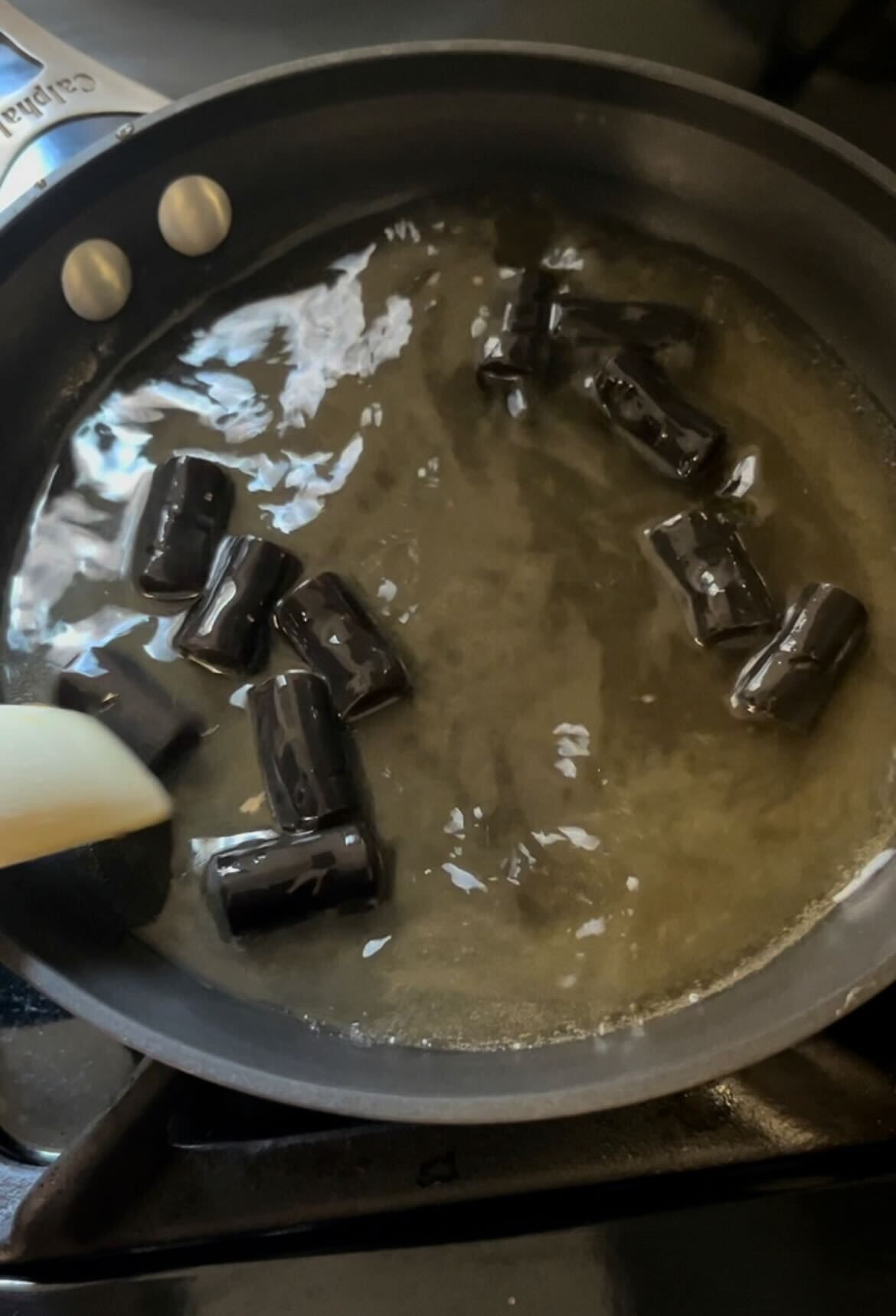
We couldn’t decide what would produce the best flavor and texture, so we attempted two different versions of black licorice syrup. For the first, we boiled one part water on the stove with three parts black licorice candy (which came from Ikea, fitting given the Swedish love affair with black licorice). The licorice was difficult to melt, and we eventually had to strain out some hard pieces of undissolved candy. The resulting syrup also turned out to be more brown than black, requiring a drop of black food coloring for the desired effect. It cooled to a thick, jellylike texture, probably due to the gelatin or other binding agents present in the candy.
Our second version of the syrup used bags of licorice tea and star anise boiled in water as a base, mixed with a large amount of melted sugar as well as some black food coloring. This syrup had less of a strong licorice flavor than the one made from candy, but a smoother, more liquid texture, which we hoped would make it easier to mix into the ice cream.
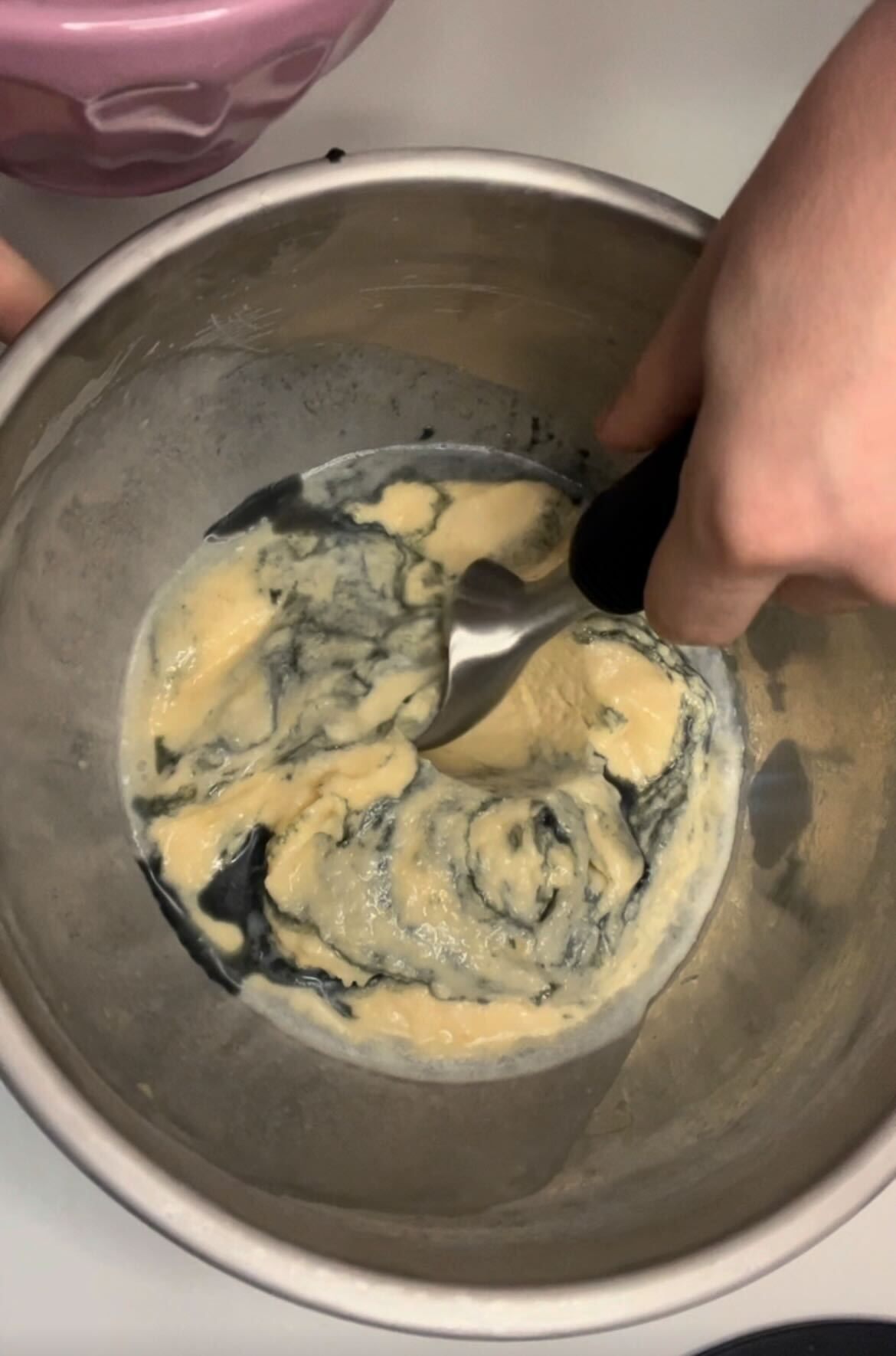
Once both syrups had cooled, it was time for the final test: combining them with the ice cream. Our goal was to have visible swirls or stripes of black that wouldn’t dissolve too much into the ice cream base (nobody wants a gray tiger tail). We split the base into two portions and folded in a spoonful of one syrup into each, being careful not to overmix and blend them together.
We had heard that tiger tail’s unique flavor profile can be polarizing, but flavorwise, we found the results outstanding. We loved how the sweet, bitter, and faintly salty notes from the orange and licorice balanced against the creaminess of the milk-based ice cream. While the tea-based syrup did combine better with the ice cream, the syrup made from candy was the clear winner: It had a deeper color and a more obvious taste of licorice. Visually, however, we weren’t 100 percent satisfied. It tasted great, but appearance-wise, it just didn’t quite scream “tiger tail.” In the future, we plan to experiment with using different kinds of licorice candies to achieve the perfect texture for the syrup. Overall though, we found this sweet retro treat surprisingly easy to recreate, leaving us wondering, “Why isn’t tiger tail ice cream more popular?”
* Correction: an earlier version of this article incorrectly described Morgan Carr as female.
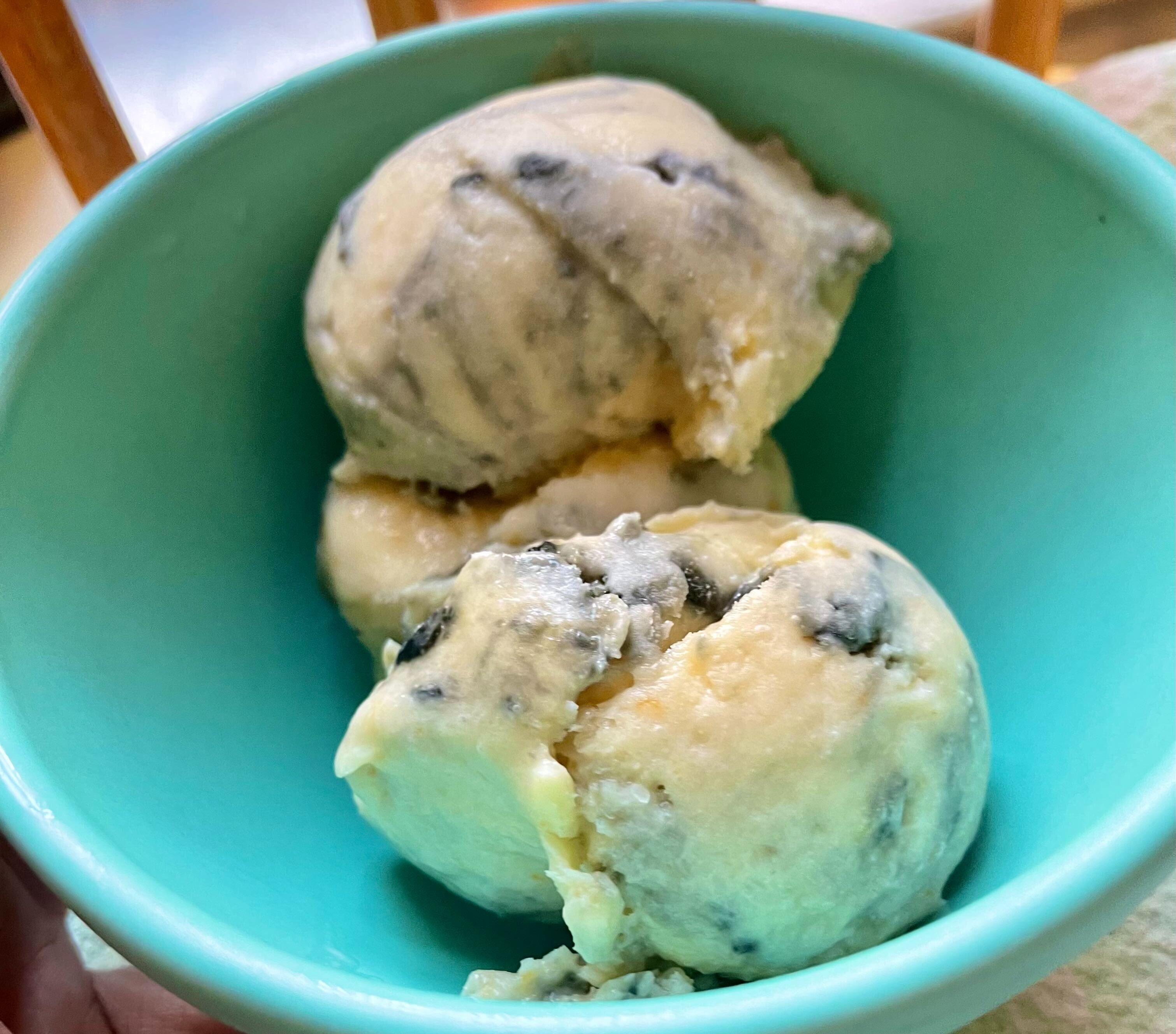
Tiger Tail Ice Cream
Orange ice cream:
1 ¼ cups sugar
¼ teaspoon salt
1 cup orange juice
1 cup whole milk
1 ½ cups whipping cream
1 teaspoon orange extract
2 teaspoons vanilla extract
Orange food coloring, to visual preference (optional)
Combine all the ingredients and chill in an electric ice cream maker until the mixture begins to set. Place in the freezer for at least two hours or overnight to solidify further.
Licorice syrup:
3 parts black licorice candy, sweet or salty*
1 part water (if you have ¼ cup candy, assume 1 ½ tablespoons water)
Black food coloring (optional)
1. Bring the water to a boil over the stove and add the candy. Stir until the candy is melted into the water as much as possible (remove unmelted pieces, if necessary). Add a few drops of black food coloring to enhance color, if desired.
2. When the syrup has cooled and the ice cream base has set, drip a spoonful of the syrup over the ice cream and fold in gently, being careful not to overmix, so that you have visible stripes. Return to the freezer to set again.
*We used these candies. About ¼ cup of candy will produce enough syrup for the batch of ice cream; exact volume may vary depending on the licorice used.
Gastro Obscura covers the world’s most wondrous food and drink.
Sign up for our regular newsletter.



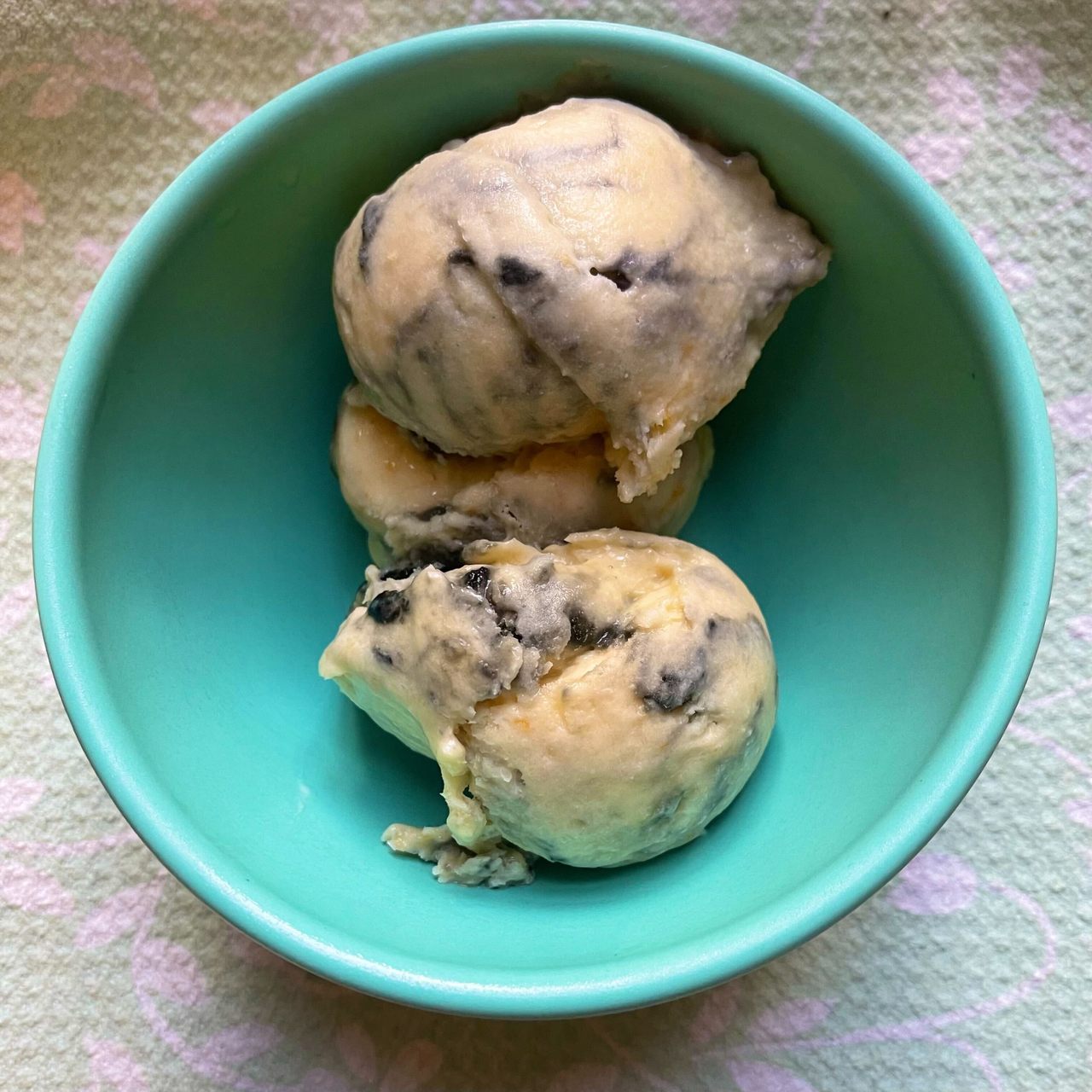


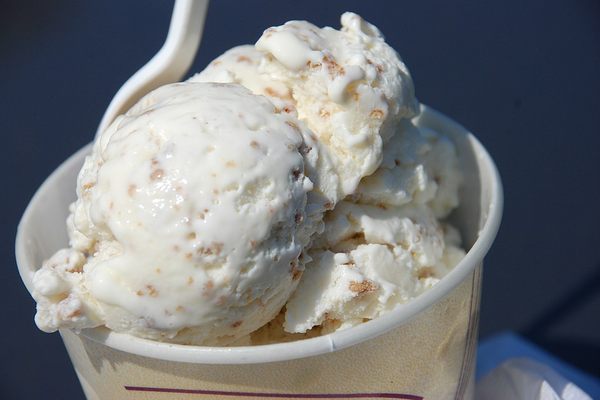












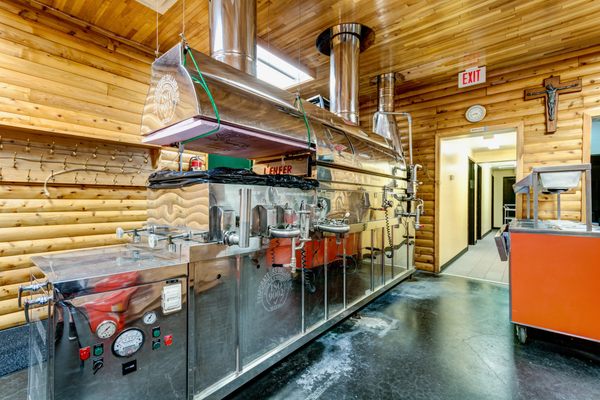


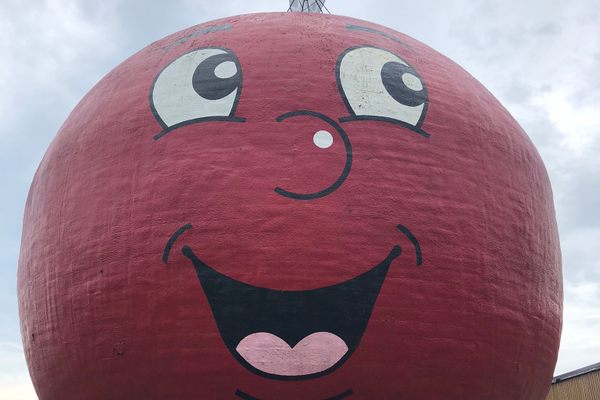



Follow us on Twitter to get the latest on the world's hidden wonders.
Like us on Facebook to get the latest on the world's hidden wonders.
Follow us on Twitter Like us on Facebook